Explore the Unique World of Cali Kites

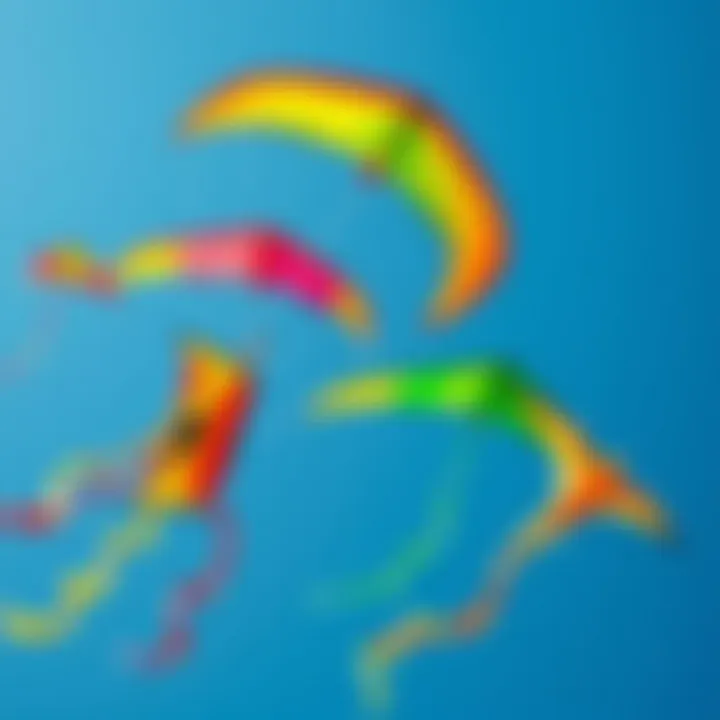
Gear and Equipment
Kiteboarding is as much about the experience on the water as it is about the gear you use. Whether you're a novice eager to get into the wind or a seasoned rider chasing the next big swell, the right equipment is crucial for performance and safety. Let’s break it down into two primary categories: essential gear for beginners and advanced equipment for those who have mastered the basics.
Essential Kiteboarding Gear for Beginners
Starting with kiteboarding can be a bit overwhelming, given the variety of gear available. However, focusing on a few key items can make your initial foray smoother and more enjoyable.
- Kite: Choose a beginner-friendly kite, typically larger, which provides more lift and stability in lower wind conditions.
- Control Bar and Lines: Essential for steering the kite, a good control bar with quality lines ensures responsiveness. Look for features that match your skill level.
- Harness: A comfortable harness that fits well is crucial. Waist harnesses give better back support while seat harnesses are more forgiving for beginners.
- Board: Opt for a larger board, as this will help with balance and stability while you’re learning to ride.
- Safety Gear: Never underestimate the importance of a personal flotation device and a helmet—these will protect you in case of unexpected falls or impacts.
Investing in quality gear from the start may seem costly, but it pays off in durability and performance. Websites like Kiteboarding.com offer great resources and reviews on various gear options.
Advanced Equipment for Experienced Riders
As skills develop, kiteboarders often shift to more specialized gear designed for high performance and specific conditions. Here’s what experienced riders should consider:
- Kite Type: Advanced riders may prefer kites that are more technical, like freestyle kites for tricks or wave kites for better control in surf conditions.
- Lightweight Boards: Look for boards made of advanced materials such as carbon fiber, which enhance agility and responsiveness.
- Adjustable Control Bars: These allow for quick customizations to adapt to changing wind conditions or personal preferences.
- Bindings: Upgrading to boots can provide better support and control during jumps and tricks.
- Emergency Gear: Having a quick-release safety system is vital. It allows you to detach from the kite in emergencies, ensuring you can get to safety promptly.
Advancements in technology have massively changed the landscape of kiteboarding equipment. Brands such as Cabrinha and Duotone lead the way, continually innovating to refine the riding experience. For top-notch reviews, check out Reddit – Kiteboarding.
"Proper gear is half the battle. Understanding what works best for your skills, the wind conditions, and the water environment elevates the entire experience."
Learning to care for your gear is equally important. Routine inspections and maintenance can prolong the lifespan of your kiteboarding kit. Store your equipment away from direct sunlight, rinse after every session to remove salt, and check for any wear and tear regularly.
In the subsequent sections, we will dive into essential techniques that every kiteboarder should master and best practices to ensure a safe adventure on the water.
Preamble to Cali Kites
Kiteboarding has soared in popularity over the years, and at the heart of this exhilarating sport lies the unique and versatile Cali kites. Understanding these kites is essential for both newcomers and seasoned riders. They aren't just fabric and string; they embody an art form that merges design, engineering, and the spirit of adventure. This exploration of Cali kites aims to highlight their significance in the kiteboarding community and the myriad factors that make them stand out.
Definition and Overview
To grasp the essence of Cali kites, one must first define what they are. Generally speaking, Cali kites refer to a specific style of kitesurfing kites designed for diverse wind conditions and rider preferences. They tend to be lightweight, yet constructed with durable materials to withstand harsh environments. From the novice to advanced kiteboarders, these kites cater to a wide range of riding styles, be it freestyle, wave riding, or racing.
Their appeal lies not only in their functionality but also in the sheer joy they bring to riders. For many, flying a kite isn't simply about sport; it’s about connecting with nature and feeling the rush of the wind under the canopy, as you glide over water.
Historical Context
Origins of Kiteboarding
The roots of kiteboarding can be traced back to the late 1960s, when pioneers started experimenting with using kites as a means of propulsion on water. The original kites were far from the sleek, engineered devices we see today; they were often large and cumbersome. Yet, they played a crucial role in showing the world that a kite could indeed make waves.
What makes the origins of kiteboarding particularly fascinating is how it was born from a blend of surfing and windsurfing cultures. During the 1980s, the first commercial kites designed specifically for this sport emerged, marking a turning point. This innovation gave rise to a community that actively sought ways to evolve the sport, leading to the introduction of designs that prioritize both speed and control.
The spirit of adventure inherent in its origins still resonates today, influencing manufacturers to create kites that are not only effective in performance but also contribute to a rider's connection to the ocean.
Evolution of the Cali Kite
Fast forward to the present, the evolution of the Cali kite is a tale of continuous enhancement and adaptation. Innovations in materials and technology—such as the use of lightweight yet robust fabrics—have allowed manufacturers to create kites with improved performance capabilities. Kiteboarding enthusiasts are now offered equipment that responds better to varying wind conditions, enhancing both safety and fun.
A noteworthy aspect of the Cali kite's evolution is the focus on user experience. Manufacturers have integrated feedback from riders into the design process to create kites that are more forgiving for beginners yet challenging enough for veterans to push their skills further. This fine balance has sparked a wave of interest among new kiteboarders, making it an attractive choice for those looking to join the sport.
Ultimately, the journey from a simple kite to the modern-day Cali kite encapsulates the blend of tradition and innovation, making it a compelling topic for any kiteboarding aficionado. By understanding this context, readers can appreciate not only the functionality of these kites but also their heritage within the broader scope of water sports.
Types of Cali Kites
Understanding the different types of Cali Kites is crucial for any kiteboarding aficionado. The classification not only influences performance on the water but also dictates the suitability for various conditions and rider styles. Each type of kite comes with unique characteristics, designed to enhance the adventure and enjoyment of the sport. Diving into the nuances of foil kites, LEI kites, and hybrid kites provides aspiring kiteboarders with informed choices to match their skill levels and environmental conditions.
Foil Kites
Foil kites are engineered with a series of air chambers that create a structurally reinforced design. These kites can be either open or closed cell, with closed-cell options often preferred for in-water performance. One of the key advantages of foil kites is their excellent lift and responsiveness in lighter wind conditions. They're lightweight, making it easier to transport, and can be packed down small without compromising shape.
Key Advantages
- Lightweight Design: Easy to carry on trips, suitable for travelers.
- Stable Flight: Maintains consistent lift and control in lower winds.
- Quick Set-Up: Less time getting into the air, maximizing time on the water.
Foil kites tend to excel in freestyle disciplines due to their ability to generate lift, allowing riders to pull off tricks with ease. However, they typically have a learning curve, making it advisable for newer riders to train with more forgiving kite types first.
LEI Kites
Leading Edge Inflatable (LEI) kites are the runaway favorites among many riders for their versatility and robustness. These kites feature an inflatable leading edge that helps maintain their shape during flight. As a result, riders can navigate through a broader range of wind conditions.
Noteworthy Features
- Durability: Built tough to handle the rigors of frequent use and rough conditions.
- Versatility: Perfect for various kiteboarding styles, from waves to freestyle.
- Ease of Launching: Generally easier to launch and land, useful for beginners.
LEI kites shine in surf conditions and provide the stability that newer riders often seek. The adaptability of these kites also makes them suitable for advanced maneuvers when aspiring to push skill levels.
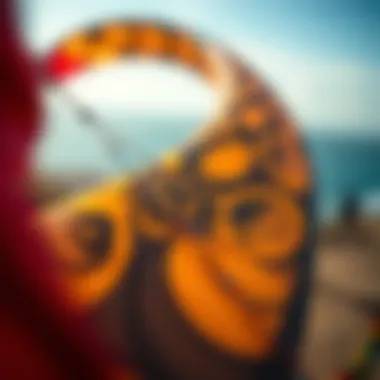
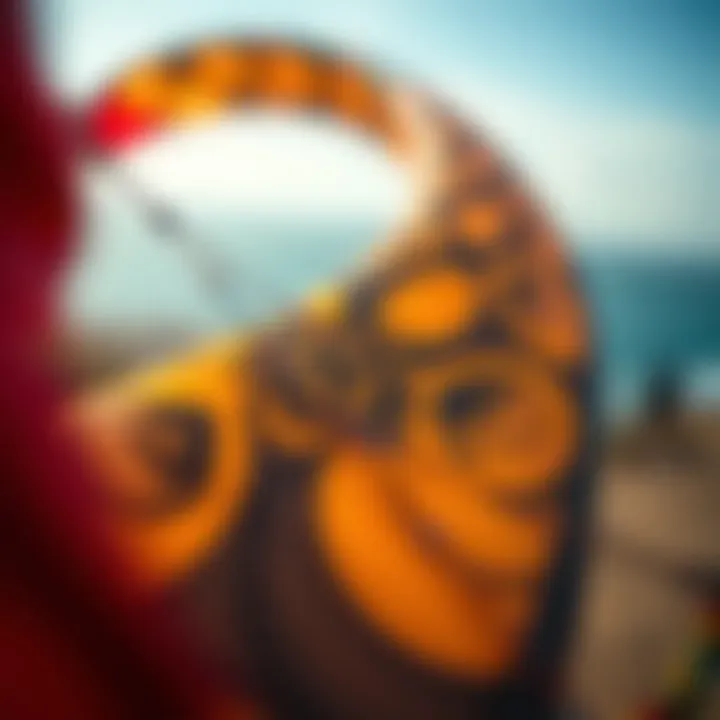
Hybrid Kites
Hybrid kites marry the properties of both foil and LEI kites, offering the best of both worlds. These kites are designed with the core elements from both styles to function optimally across various environments.
Characteristics
- Balanced Performance: Good lift and versatility, suitable for different wind conditions.
- Dual Purpose: Effectively supports both freestyle and wave riding.
- Moderate Handling: Strikes a balance between agility and stability.
Such kites appeal to those who want flexibility in their riding. They can be great for riders who want to dabble in multiple kiteboarding disciplines without switching equipment continuously.
In short, selecting the right type of Cali kite hinges on factors like wind conditions, rider skill, and preferred discipline. Knowing the differences can mean the difference between a day spent fighting the wind and one where joy reigns.
In summation, the world of Cali kites encapsulates a diverse category of equipment ready to support various adventures. Whether you lean towards the lightweight design of foil kites, the robust nature of LEI kites, or the versatile features of hybrid kites, each option has something invaluable to offer, forming the backbone of exciting kiteboarding experiences.
Key Features of Cali Kites
When it comes to understanding Cali kites, the key features play a pivotal role. These elements not only define functionality but also influence performance and user experience. For kiteboarders and outdoor enthusiasts alike, knowing what to look for can enhance both safety and enjoyment on the water. The specific materials used, combined with thoughtful design elements, make the difference between an average session and an exhilarating ride.
Materials Used
Durability Considerations
Durability is the backbone of any kite design. Understanding this aspect is crucial as it impacts longevity and reliability. Cali kites are often crafted using high-quality materials such as ripstop nylon and polyester, known for their resistance to tearing and wear. These fabrics can withstand harsh winds and abrasive conditions without falling apart at the seams. For kiteboarders, the robustness of these materials ensures that their equipment doesn't fail when they need it most.
A kite built with durable materials can handle the rigors of day-to-day use, making it a smart investment. However, it’s essential to remember that not all durable fabrics are equally light; some may add weight, which could affect performance. The balance between durability and weight is a significant consideration for those opting for long-term usage.
Weight and Performance
The weight of a kite can be a deciding factor in overall performance. Lighter materials allow for better maneuverability and responsiveness, enabling riders to perform tricks with ease. Advanced kites often utilize a combination of lighter and stronger materials to maintain structural integrity while minimizing drag.
When discussing weight, we can't overlook its effect on performance. A kite that is too heavy may struggle in lighter winds, while one that is too light might become uncontrollable in strong gusts. The ideal design offers an optimal balance that suits a range of wind conditions, catering to various skill levels. Ultimately, a kite's weight directly correlates with its performance, making it a vital consideration.
Design Elements
Wing Shape and Size
The wing shape and size of a Cali kite are fundamental components that dictate how the kite flies. Different shapes serve distinct purposes. For instance, kites with a wider wingspan are often more stable and draw in more wind, allowing for easy handling. Conversely, a smaller, narrower kite provides increased speed and agility, ideal for tricks and racing.
Many riders find that they need to adjust their kite size based on their specific riding styles or water conditions. A versatile design that allows quick changes in wing configurations can significantly enhance the experience. Therefore, choosing the right wing shape and size becomes essential, influencing not just performance but the overall enjoyment of kiteboarding.
Color and Aesthetic Appeal
While functionality reigns supreme, color and aesthetic appeal shouldn't be underestimated. A vibrant kite can enhance visibility, which is crucial for safety on busy beaches and waterways. On a more personal level, riders often prefer kites that reflect their individual style and personality.
Colors can also have psychological impacts; certain hues can evoke feelings of excitement or calmness. Plus, unique designs can make your kite stand out among a sea of competitors, providing that essential flair on the water. Ultimately, while aesthetics should not be the sole focus, they contribute to the overall experience of being out on the water, adding a slice of joy to the adventure.
Performance Analysis
Understanding the performance of Cali kites is crucial for anyone keen on getting the most out of their kiteboarding experience. The performance analysis dives deep into various elements that influence how these kites handle in different conditions. This knowledge allows kiteboarders to make informed decisions when selecting their gear, ensuring it aligns with their skill level and the environment in which they intend to ride.
A kite's performance is shaped by numerous factors, particularly its wind range, handling capacity, stability, and control. Each performance characteristic is significant in determining how a kite responds when put to the test, whether in gentle breezes or gusty winds.
In this section, we will explore two specific aspects of performance: Wind Range and Handling, along with Stability and Control. These are foundational elements that affect not just how the kite flies, but how the rider interacts with it in various situations.
Wind Range and Handling
The wind range of a kite refers to the specific wind speeds in which it can effectively generate power and provide control. This is a vital consideration, as different kites are suited to different wind conditions. For instance, foil kites typically excel in lighter winds due to their design and ability to maintain lift, whereas leading-edge inflatable kites, or LEIs, are often more effective when the wind picks up.
Key Points about Wind Range:
- Adaptability: Understanding the wind range allows kiteboarders to adapt their choice of kite based on the day’s conditions, enhancing their time on the water.
- Power Level: A kite with a wide wind range can provide optimal power across varying wind speeds, translating to a more enjoyable ride.
- Nimbleness: Handling is linked to how easily a rider can maneuver the kite in its effective wind range. This can greatly affect tactical decisions during a ride, like jumps or turns.
For example, if the wind suddenly shifts from a steady breeze to a gusty scenario, a kite with a robust handling characteristic will respond quickly and accurately. It empowers riders to maintain control, thus preventing tricky situations.
Stability and Control
When it comes to stability, it's all about how the kite behaves throughout its flight. A stable kite provides a smoother riding experience, allowing kiteboarders to focus on their technique rather than constantly correcting the kite's position in the sky.
Considerations for Stability and Control:
- Design Features: Kites with specific design features, such as a flatter wing shape, tend to offer increased stability, making them ideal for beginners. Conversely, more advanced riders might prefer kites that allow for more aggressive maneuvers at the expense of some stability.
- Control Systems: The control bar and line setup also play a vital role in how directly a rider can communicate with their kite. Systems that offer smooth adjustments can enhance a rider’s overall control.
- Terrain Interaction: Different terrains, like choppy waters versus calm lakes, require kites to exhibit distinct stability characteristics. Kites designed for turbulence tend to perform better under more challenging conditions.
"The beauty of kiteboarding lies in the intimate connection between rider and kite; understanding the kite’s behavior is fundamental to mastering the sport."
In summary, performance analysis serves as a compass for kiteboarders, guiding their choices and experiences. By focusing on wind range, handling, stability, and control, riders can equip themselves to handle varying conditions, maximizing both their comfort and performance on the water.
Top Brands of Cali Kites
The significance of understanding the top brands in the Cali kites market cannot be overstated. For kiteboarders and adventurers alike, a brand often embodies more than just a logo; it represents quality, innovation, and a promise of performance on the water. When one decides to invest in a kite, it is crucial to recognize which brands have been pioneering in the industry, as well as those that are shaking things up. The following sections delve into both established names and emerging players, setting the stage for an informed choice tailored to one’s kiteboarding needs.


Popular Manufacturers
Brand A: Innovations and Features
Brand A has carved a niche in the Cali kites sector, thanks to its relentless focus on innovation and user-friendly designs. Their kites are renowned for cutting-edge technology, which drives performance to new heights. The hallmark of Brand A is its unique adaptive canopy design, which enhances stability across various wind conditions.
Why favor Brand A? The answer lies in its commitment to using lightweight materials, balancing durability with ease of handling. This makes it a preferred choice for both beginners and seasoned kiteboarders. One distinct feature is its intuitive quick-release safety mechanism, providing kiteboarders peace of mind while zipping across the waves. However, it’s worth noting that while these kites excel in maneuverability, some users may find them slightly less robust under extreme weather, requiring careful handling.
Brand B: Market Presence and Reputation
Brand B occupies a formidable space in the kiteboarding arena, bolstered by years of consistent quality and community engagement. Their longstanding presence in the market means that feedback from enthusiasts has directly influenced their evolutionary designs. The key characteristic of Brand B is its dedication to user feedback, resulting in kites that resonate with the needs of kiteboarders worldwide.
One standout feature is the reinforced stitching process, ensuring that these kites withstand the rigors of frequent use. For many, Brand B is synonymous with reliability and performance, making it a favored choice. However, with such a proven track record, their kites tend to come at a higher price point, which might be a consideration for those on a budget.
Emerging Brands
As the kiteboarding scene evolves, emerging brands are beginning to stake their claim. These newcomers often bring fresh perspectives and innovative concepts to the fore, shaking up the marketplace.
Unique Offerings
Emerging brands are not afraid to experiment. They often introduce unique offerings that set them apart from traditional names. For instance, one brand could focus on eco-friendly materials, tapping into the growing demand for sustainability in outdoor sports. This not only appeals to environmentally conscious consumers but also highlights a unique characteristic of their production processes.
Advantages of these unique offerings include the potential for enhanced performance and a customizable experience, catering to a niche yet loyal audience in the kiteboarding community. Nevertheless, newcomers may still face challenges regarding brand recognition and overall reliability, necessitating caution for those seeking established quality.
Market Disruption
Market disruption is a term synonymous with some innovative newcomers in the Cali kites domain. These brands aspire to revise conventional designs and production methods. By doing so, they often introduce affordable alternatives that do not compromise on quality.
One clear benefit of this disruption is that it encourages competition amongst established brands, driving them to innovate further and enhance their offerings. However, the downsides could include inconsistencies in product quality, as newer players may still be refining their manufacturing processes. As much as they challenge the norms, these emerging brands must build their reputations in a crowded marketplace, making it a orlking balance between risk and reward for consumers.
Technological Advancements
The world of Cali kites has significantly transformed as various technological advancements have surfaced over the years. These innovations not only enhance the performance of the kites but also provide safety and convenience for kiteboarders. As sports enthusiasts and adventure seekers venture into kiteboarding, understanding these advancements can be critical to their overall experience on the water. Improved materials and construction techniques play an essential role in this field, giving kiteboarders access to enhanced durability, lighter-weight kites, and more efficient designs.
New Materials and Techniques
In the kiteboarding scene, the type of materials used in kite construction can make or break a kite's performance. Traditional materials like nylon and polyester have seen significant advancements, with manufacturers now utilizing cutting-edge fabrics such as ripstop nylon and high-tenacity polyester. This not only boosts durability, making the kite more resistant to wear and tear from saltwater and UV rays, but also enhances flexibility and responsiveness.
One notable innovation is the introduction of TPU (thermoplastic polyurethane) for bladder materials, which has proven to be lighter and stronger than conventional options. This means that kiteboarders can enjoy better lift and power without compromising overall stability due to excess weight.
Additional techniques, like laser-cutting for precision production, are now prevalent. This technique allows for a more consistent shape in kite profiles and leads to improved aerodynamics on the water. As a result, riders can find it easier to maneuver through gusts of wind or choppy waters.
"Advancements in materials and production techniques enable kiteboarders to experience the sport like never before."
Impact of Technology on Performance
The performance metrics of Cali kites have markedly improved thanks to recent technological developments. Enhanced materials allow for a wider range of wind conditions, meaning that a single kite can operate efficiently in various scenarios.
For instance, with the advent of lightweight frames and advanced bridle systems, kiteboarders can experience better control and responsiveness while flying their kites. The result is a more enjoyable ride, particularly in challenging wind situations.
Consider also the semi-inflatable and full-inflatable designs pioneered in recent years. These provide greater stability while in flight, permitting riders to perform a greater variety of tricks and maneuvers without fearing for a sudden drop or loss of control.
In summary, technological advancements in Cali kites lead to:
- Enhanced durability and lifespan of kites
- Increased responsiveness and control
- Wider wind range capabilities
- Improved safety and reliability
As kiteboarding continues to evolve, staying in the loop about these advancements will be advantageous for both seasoned professionals and newcomers to the sport.
For further reading on the materials used in kite design, check out these sources:
By comprehending the surface of technological improvements in the realm of Cali kites, one can truly appreciate the sport's ascent and end up with a vastly enriched kiteboarding experience.
Kiteboarding Locations for Cali Kites
When it comes to enjoying the exhilarating sport of kiteboarding with Cali kites, the location makes all the difference. It's not merely about having the right gear, but the right environment to unleash your full potential on the water. Certain spots are world-renowned, combining wind conditions, waves, and local culture, creating a playground for both beginners and seasoned pros.
Selecting the right location can greatly enhance your experience, as it provides unique challenges and advantages. Whether it's the thrill of riding strong winds or the community spirit you find at local events, each beach or lake adds its own flavor to the sport. Here are a few elements and benefits to consider when exploring kiteboarding locations:
- Wind Conditions: The strength and consistency of the wind can make or break a session. You’ll want to find locations that provide steady sea breezes, especially when the sun is at its peak.
- Local Amenities: Easy access to repair shops, rental services, and instructors can significantly smoothen your adventure, especially if you're new to the sport.
- Cultural Significance: Each location often has a unique culture surrounding kiteboarding, with many spots hosting competitions that cultivate a vibrant local scene.
- Community: Finding a supportive group can transform your kiteboarding journey. Meeting fellow enthusiasts can lead to sharing tips or simply enjoying the sport together.
Top Destinations
The world is dotted with exceptional kiteboarding locations ideally suited for experiencing the performance of Cali kites. Here are a few top picks you might want to consider:
- Hood River, Oregon: Famed for its reliable wind and diverse conditions, this spot attracts kiteboarders from all over. The stunning views add to the experience, making it perfect for those who haven’t yet tasted the Pacific Northwest magic.
- La Ventana, Mexico: With warm waters and consistent winds, La Ventana is a go-to destination for winter kiteboarding. The camaraderie of the locals and other kiteboarders creates a welcoming vibe that’s hard to resist.
- Tarifa, Spain: Known as the kiteboarding capital of Europe, it boasts strong winds and a vibrant culture. Tarifa is also famous for kite festivals where riders gather to compete and socialize.
- Cumbuco, Brazil: A paradise for riders looking for perfect conditions nearly year-round. The combination of flat waters and challenging waves offers something for everyone.
- Cape Town, South Africa: This spot's stunning backdrop and strong winds make it a must-visit for any serious kiteboarding enthusiast. Bloubergstrand, in particular, is a favorite among local and visiting riders alike.
Local Culture and Community
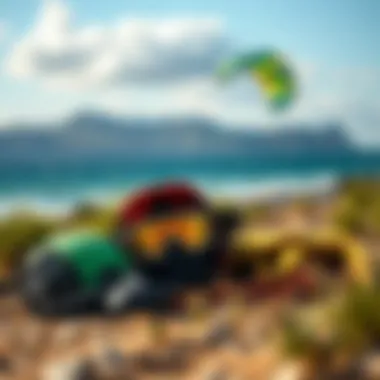
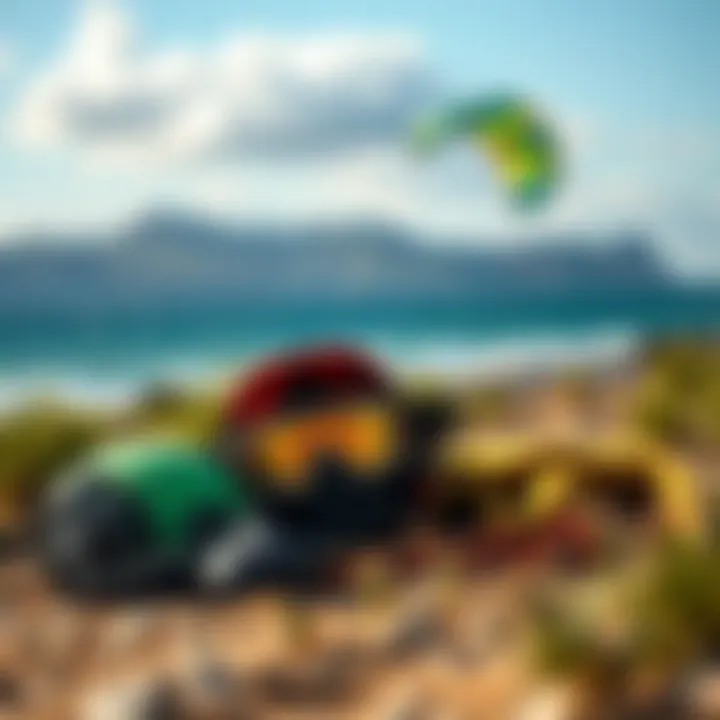
Nothing amplifies the joy of kiteboarding quite like the culture surrounding it. Each kiteboarding location has a unique community vibe, and getting involved can enrich your experience immensely.
In places like La Ventana, you’ll find a relaxed atmosphere where riders gather after a day on the water to share stories and tips. This spirit of collaboration not only helps newcomers learn but fosters friendships that can last a lifetime. Meanwhile, in Tarifa, the energetic nightlife combined with its competition scene keeps the adrenaline pumping even after the sun sets.
Local shops often organize gatherings, workshops, and demo days where you can try out new gear and meet fellow kiteboarders. Engaging with the community can offer insights into the best spots and upcoming events that may be taking place during your visit.
To sum it up, your choice of kiteboarding locations plays a pivotal role in your overall experience with Cali kites, both on and off the water. The challenge of finding the perfect spot, coupled with the enriching encounters from local culture, all meld into the life-changing experience that kiteboarding offers.
"Kiteboarding is more than just a sport; it’s a lifestyle wrapped up in the wind and waves, enriched by the communities that practice it."
For more information, you may want to check out resources such as Wikipedia on Kiteboarding, which provides a broader picture of the sport and its global appeal.
Safety Guidelines
Safety is a cornerstone element in the world of kiteboarding, especially when it comes to using Cali kites. Ensuring that both newcomers and seasoned enthusiasts understand the safety protocols not only mitigates risks but enhances the overall enjoyment of the sport. Given that kiteboarding involves various environmental factors such as wind and water currents, following thorough safety guidelines can make a world of a difference.
Being safe while kiteboarding is not just about wearing the right gear; it’s also about fostering an aware and proactive mindset. This segment outlines the essential gear required for safety and shares critical tips to prevent accidents on the water.
Essential Gear for Safety
When stepping onto the water with a Cali kite, it is crucial to ensure you are equipped with the right safety gear. This gear doesn't just boost performance; it is a lifeline during unforeseen circumstances. Here are some must-have items:
- Life Jacket: A personal flotation device (PFD) is non-negotiable. It provides buoyancy, especially in rough waters where fatigue can set in unexpectedly.
- Helmet: Protecting the head is paramount. A good helmet shielding from wind impacts and accidental falls is essential, helping to prevent concussions.
- Safety Knife: Well, you never know when a line might tangle. Having a quick-release knife can save you from a sticky situation if the kite lines become entangled around you or another object.
- Multi-tool: Useful for various quick fixes on the go.
- Leash Systems: Many kites come with a leash that connects to the rider. It allows for quick release in emergencies, ensuring you don’t lose the kite or get dragged in turbulent waters.
- Sunscreen: While it may seem trivial, prolonged exposure to UV rays can lead to sunburn, which could ruin your kiteboarding experience and overall health.
Investing in these safety essentials can prevent accidents and potentially save lives. The right gear offers peace of mind that allows kiteboarders to focus on the thrill of gliding across the waves instead of fretting over hazards.
Tips for Accident Prevention
While proper gear is vital, employing safe practices in kiteboarding is equally important. Here are some practical tips that will help you steer clear of mishaps:
- Know Your Environment: Understanding the local weather patterns, tide schedules, and any potential hazards in your chosen kiteboarding location will keep you informed.
- Check Your Equipment Regularly: Before every outing, inspect your kite for any wear and tear. Lines should be free of tangles, and the kite should be properly inflated.
- Practice Controlled Launches: Launch your kite in open areas away from people and obstacles. A controlled launch reduces the risk of accidents and keeps others safe.
- Learn to ‘Self-Rescue’: Drills for returning safely to land after a malfunction. Knowing how to handle a situation can make you prepared and calm, preventing panic-induced accidents.
- Stay Sober: Alcohol and drugs can severely impair your judgment, coordination, and reflexes. Riding sober should be a golden rule for anyone serious about safety.
Safety first, fun second. The thrill in kiteboarding should not overshadow your need to stay protected while enjoying this sport.
By adopting these safety guidelines and implementing these prevention techniques, kiteboarders can navigate the exhilarating world of Cali kites while prioritizing their well-being and the safety of others. An informed rider is an empowered rider.
Maintenance Tips for Cali Kites
When it comes to maximizing the longevity and performance of Cali kites, proper maintenance is paramount. Anyone who has spent time on the water knows that the elements can be harsh and unforgiving. That’s why understanding how to care for these dynamic sails can save you time, money, and frustration. By adopting a keen maintenance routine, kiteboarders can ensure that their equipment remains in top shape, enhancing both safety and enjoyment during sessions.
Cleaning and Storage
Cleaning your Cali kite is an essential step that should not be taken lightly. After every adventure on the water, especially if you have been in saltwater or sandy environments, rinsing your kite with freshwater is crucial. Salt can corrode the materials and mechanical parts over time, and sand can wear on the fabric and stitching. Here are some steps to follow for effective cleaning:
- Rinse immediately: After your session, take a moment to give your kite a solid rinse with fresh water. This will help remove any salt or sand residues.
- Dry it out: Always store your kite dry. After cleaning, let it air dry completely before folding it up. This protects the material from mold and mildew, which can be a real headache to deal with later.
- Fold carefully: When it’s time to store the kite, avoid harsh creasing. Instead of folding it in the same spots each time, roll it up or use a kite bag that protects against wear.
- Store it wisely: Find a cool, dry space to store your kite, away from direct sunlight and extreme temperatures. UV rays can weaken the fabric, causing long-term damage.
"Caring for your kite isn't just routine; it's an investment in your adventures."
Repairs and Troubleshooting
Even the best kites may encounter hiccups, and knowing how to manage repairs can mitigate minor issues before they evolve into bigger problems. Here are some important guidelines:
- Assess damage promptly: After a session, check for any punctures, tears, or loose seams. The earlier you detect a problem, the easier and cheaper it can be to repair.
- Use repair kits: Invest in a reliable repair kit that includes patches, adhesive, and other tools. These kits can often be a lifesaver on the beach. Some manufacturers even offer specific kits customized for their kites.
- Follow guidelines: Each kite may have specific recommendations for repairs offered by the manufacturer. Referring to these can ensure you're carrying out fixes correctly.
Common Issues and Solutions:
- Air leaks: Check the bladder for holes. A quick patch should do the trick.
- Frayed lines: If you notice any frayed parts, replace them before hitting the water again.
- Damaged canopy: For tears larger than a quarter, you might need to sew them with a heavy-duty needle or seek professional help.
Being proactive in your maintenance routine not only extends the life of your Cali kite but also ensures a smoother kiteboarding experience. By implementing steady cleaning and repair habits, kiteboarders can ride the waves with peace of mind, knowing their gear is as prepared as they are.
The Future of Cali Kites
The future of Cali kites is not just a fleeting consideration; it stands as a pivotal point of focus for kite enthusiasts, manufacturers, and the global community involved in this thrilling sport. As the sport evolves, so does the kite itself, shaped by technological advancements, environmental awareness, and changing social dynamics.
Understanding these upcoming trends is essential for both consumers and industry stakeholders. It allows kiteboarders to make informed decisions and helps manufacturers align their designs with user needs and environmental considerations. This glimpse ahead is about more than just equipment - it reflects the vibrant culture and passionate community that surrounds the Cali kite scene.
Predicted Trends
In the world of Cali kites, trends are not merely born from fashion; they often stem from necessity and innovation. One trend that’s gaining momentum is the use of sustainable materials in kite production. Recent studies have shown that environmental consciousness is influencing consumer choices. Manufacturers may shift towards eco-friendly materials, partially due to pressure from consumers who care deeply about the planet.
Another significant development is the integration of smart technology into kites. Imagine real-time analytics displayed through wearable tech or monitoring performance data via an app. This could enhance safety and performance, appealing to both seasoned kiteboarders and tech-savvy newcomers.
- Compact Gear: As kite travel becomes more frequent among enthusiasts, the demand for compact and lightweight gear is growing. Innovations will likely lead to collapsible designs that do not compromise on performance.
- Customization: Personalized kites tailored to individual riding styles or conditions are expected to gain popularity. Developers might utilize AI to analyze user preferences and riding habits for optimal design.
- Light Wind Capabilities: With varying climate conditions around the globe, kites designed specifically for low-wind situations could become a staple for many, making it possible for kiteboarding in previously unthinkable conditions.
Community Developments
As kiteboarding grows, so does its community. The local cultures in kiteboarding hotspots around the world will continue to flourish, offering unique flavors and identities that shape each location. We can expect to see more organized events and competitions that cater to all levels, promoting inclusivity in the sport.
Local clubs and online forums, like those found on Reddit or specialized Facebook groups, play a critical role in connecting enthusiasts. These platforms will likely evolve to provide better resources for education, tutorials, and tips, creating a more knowledgeable user base.
Equally, social responsibility initiatives are likely to gain traction in the kiteboarding community. From beach clean-ups to environmental campaigns, kiteboarders will increasingly take an active role in safeguarding the environments where they ride. This commitment not only enhances community spirit but also cultivates a culture of stewardship among participants.
"The spirit of kiteboarding lies not just in the thrill of the wind beneath your feet, but in the bonds created between those who share the skies."
As we peer into the horizon, the future of Cali kites promises to be vibrant and deeply interconnected with both technological and community advancements. Surfers need to stay ahead of the curve and embrace the changes that shape the art and sport of kiteboarding. The commitment to sustainability, integration of technology, and the flourishing of community endeavors will influence not only the equipment riders use but also the very heart of the kiteboarding experience.



